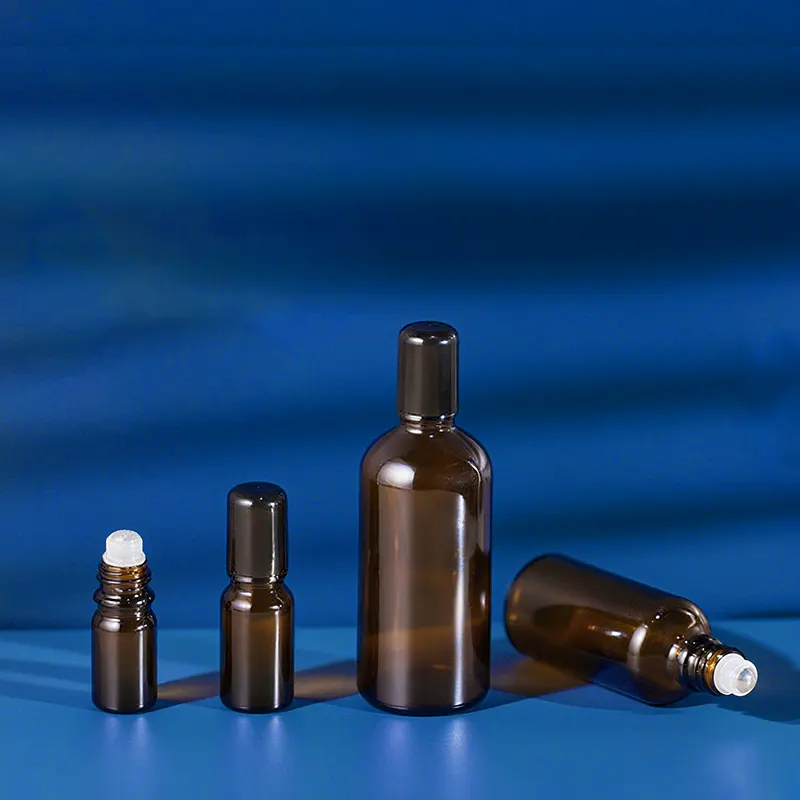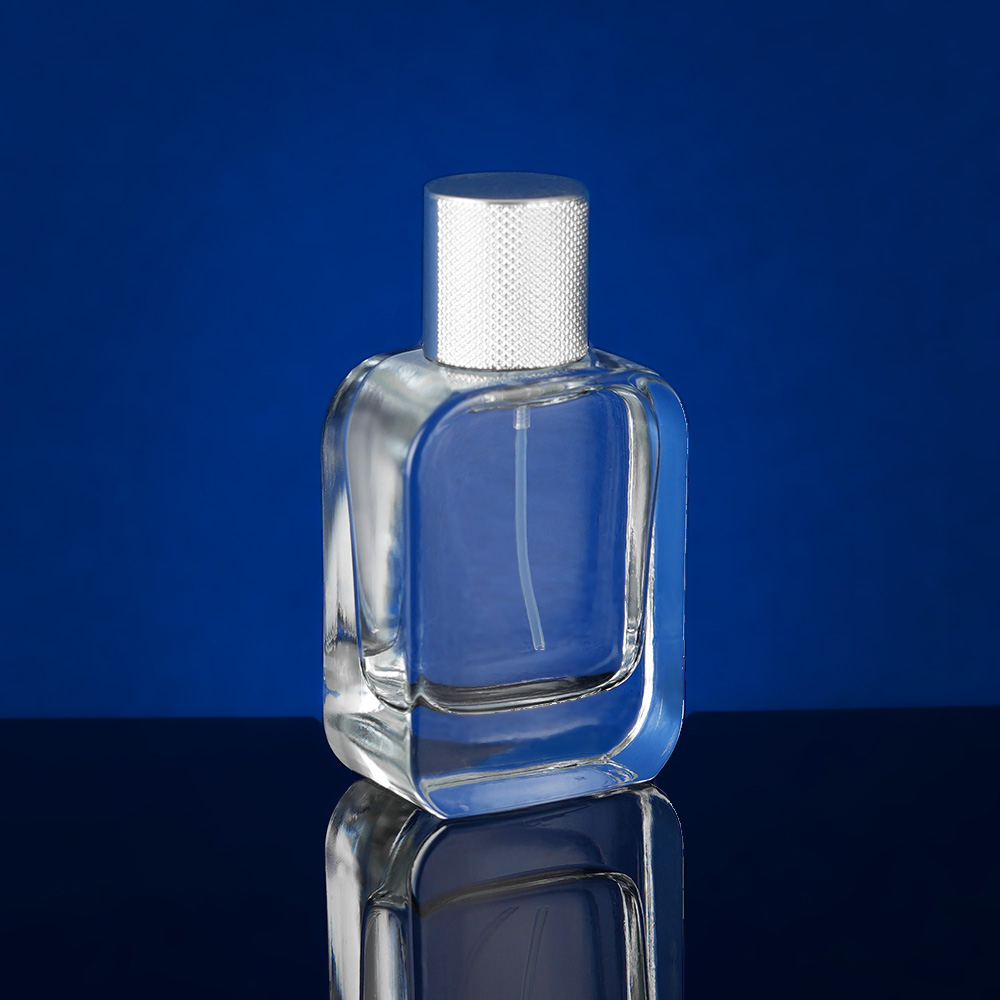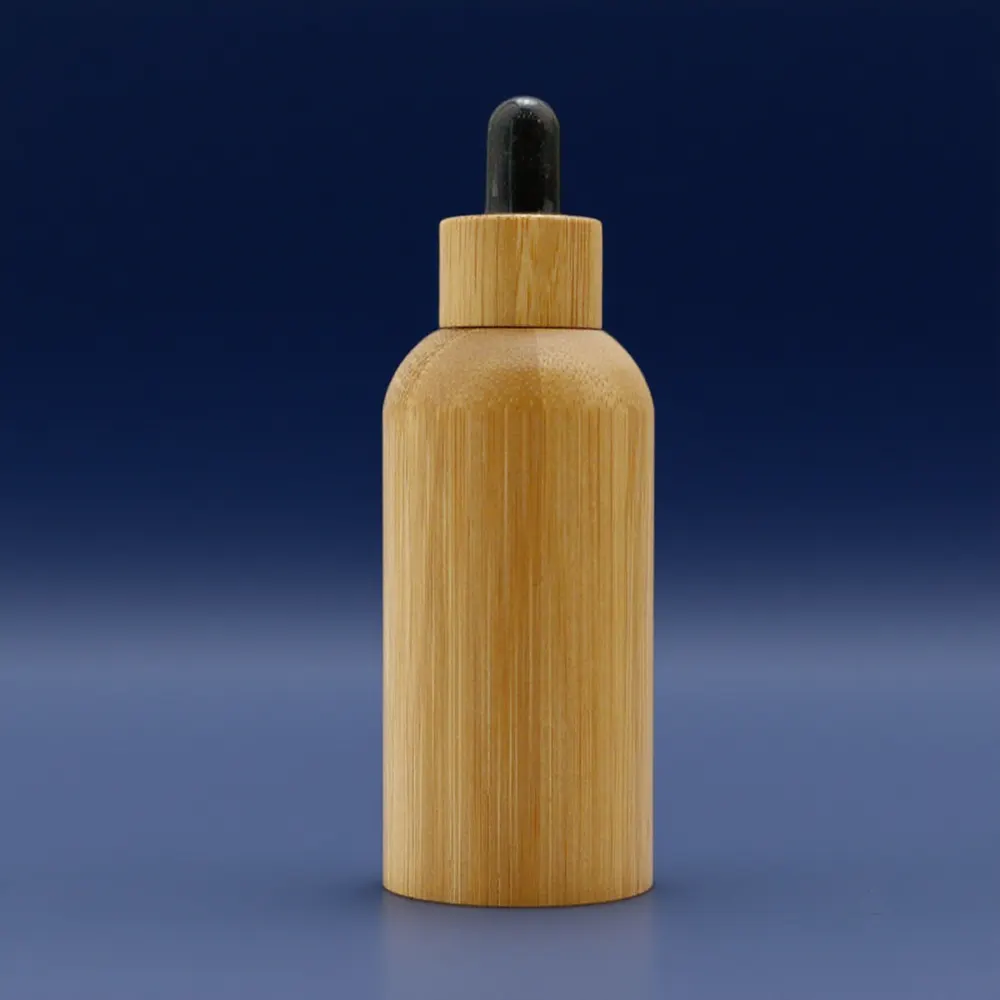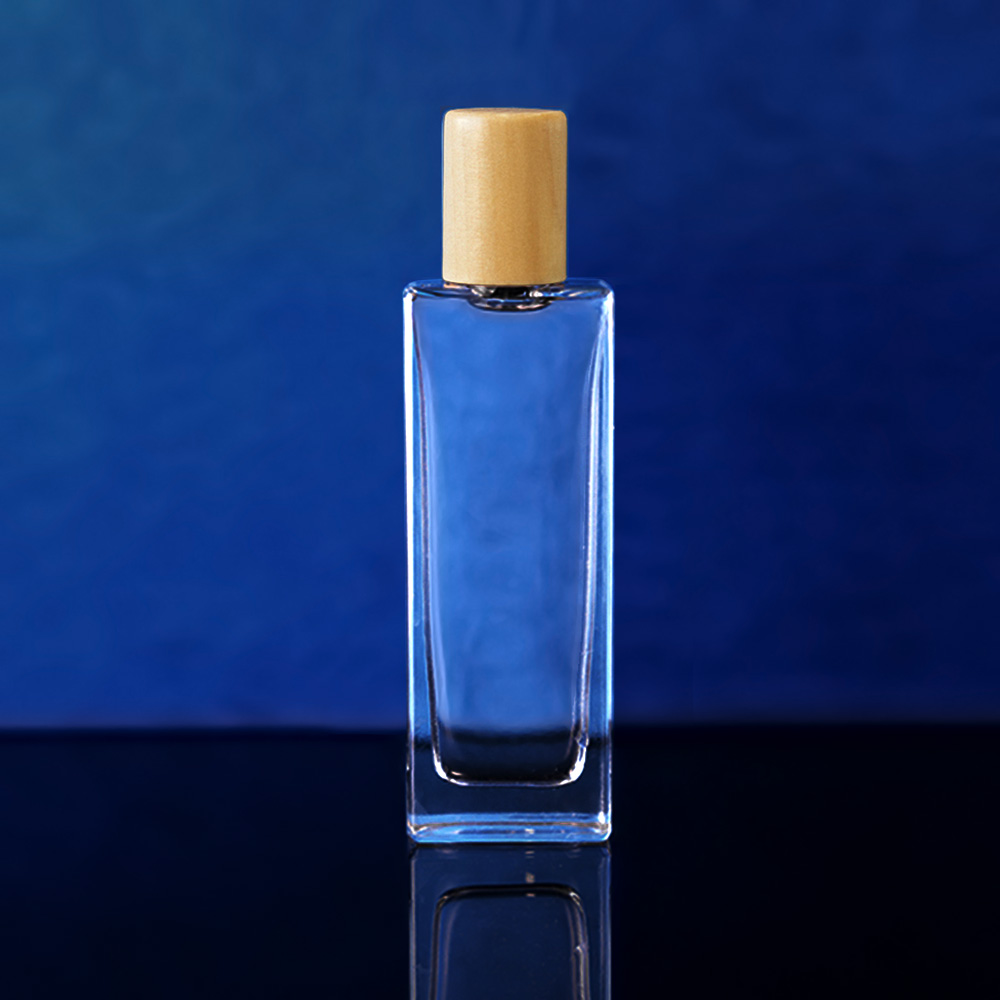
Rolul indispensabil al companiilor de ambalaje pentru cosmetice în succesul sticlelor de ulei esențial din sticlă
Cuprins
1. Introducere: Imperativul strategic al companiilor de ambalare în lansarea sticlelor de ulei esențial din sticlă
Pe piața uleiurilor esențiale în continuă creștere, companiile de ambalaje pentru cosmetice sunt parteneri strategici, importanți pentru lansarea cu succes a produselor, în special pentru sticlele de ulei esențial din sticlă. Acest raport subliniază contribuția lor versatilă, abordând provocări și oportunități unice. Estimată la o creștere semnificativă a pieței globale a uleiurilor esențiale (27-59 miliarde USD până în perioada 2030-2034), ambalajele devin un instrument important pentru creștere, discriminare și succes pe piață, care servesc drept pânză pentru prima impresie și povestea mărcii. Pentru mărci precum... Vesseluxe, ambalajele premium sunt esențiale pe piețele competitive.
2. Concept și design: Transpunerea viziunii mărcii în sticle funcționale de uleiuri esențiale din sticlă
Experiența de produs începe cu o conceptie și un design colaborativ, traducând identitatea brandului într-un concept funcțional și plăcut din punct de vedere estetic. sticle de ulei esențial din sticlă.
2.1. Selecția materialelor pentru eficacitatea produsului și poziționarea mărcii
Sticla este necesară pentru uleiurile esențiale datorită inactivității chimice, prevenind reacțiile și păstrând levigarea, puritatea, rezistența și durata de valabilitate.
- Sticlă chihlimbară: Standarde industriale, blocând peste 97% din lumina UV, ideal pentru uleiurile sensibile la lumină.
- Sticlă albastră de cobalt și verde: Oferă securitate UV moderată și aspect estetic plăcut.
- Sticlă violetă (sticlă Miron): Protecție mai bună prin blocarea întregii lumini vizibile cu excepția violetului, ideală pentru uleiuri extrem de sensibile, produse sub formă de ultra-pramium, dar la costuri ridicate.
- Sticlă borosilicată: 13–15% oxid de bor, care oferă o rezistență mai bună la căldură, șocuri chimice și termice, fiind ideal pentru aplicații solicitante.
- Sticlă sodo-calcoasă: mai ieftin și mango (90% sticlă comercială), dar mai puțin durabil.
2.2. Design ergonomic și mecanisme de distribuire
Designul ergonomic, în care aderența și turnarea ușoară îmbunătățesc confortul utilizatorului.
- Inserții pentru pipetă: Important pentru o dozare precisă; Dezordinea poate cauza răspândirea și contaminarea.
- Gât specific: Designuri precum sticlele 18DIN asigură o fixare precisă a capacului, o dozare coerentă și o siguranță sporită a scurgerilor.
- Dimensiunea sticlei: Dimensiunea mică (5ml-30ml) este preferată pentru portabilitate și pentru a reduce oxidarea, adesea cu dop cu roll-on sau cu pipetă europeană.
2.3. Integritatea închiderii și siguranța împotriva manipulării
Capacele sunt importante pentru conservarea uleiurilor și prevenirea scurgerilor, deoarece crăpăturile accelerează oxidarea.
- Bandă cu protecție împotriva manipulării neautorizate: necesare pentru siguranța produselor, manipularea consumatorilor și protejarea reputației mărcii.
- Procesul de umplere: În timpul umplerii, un capac necorespunzător sau o problemă (de exemplu, ulei, strângere greșită a filetului) poate accentua scurgerile, defecțiunile și pierderea de putere, un design și o fabricație robuste.
2.4. Identitatea mărcii și percepția consumatorilor
Ambalajul acționează ca un ambasador al mărcii, influențând considerabil percepția consumatorilor și deciziile de cumpărare; 66% dintre consumatori încearcă complet produse noi bazate pe ambalaje.
- Aspect vizual atractiv: 4.1. Precision Molding Techniques
- Alinierea mărcii: Alinierea ambalajelor cu imaginea mărcii consolidează autenticitatea, în timp ce culoarea, imaginația și tipografia provoacă relații emoționale. Ambalajele ecologice semnează stabilitatea.
- Estetica culturală: 4.3. Diverse Decoration Methods
2.5. Instrumente de colaborare și vizualizare avansată
Pentru o cooperare eficientă, trebuie înțelese identitatea mărcii și publicul țintă.
- Prototip rapid: Randarea 3D și vectorii legați de inteligența artificială sunt un organ integrant. Companii precum Jarsking utilizează desenul 3D pentru prototipare rapidă și recurență a designului, dezvoltând designul în câteva ore și dezvoltând mostre în câteva zile.
- Depășirea provocărilor: Aceste dispozitive ajută la asigurarea stabilității bazei pentru formele organice prin livrarea precisă a materialului și modificările matriței.
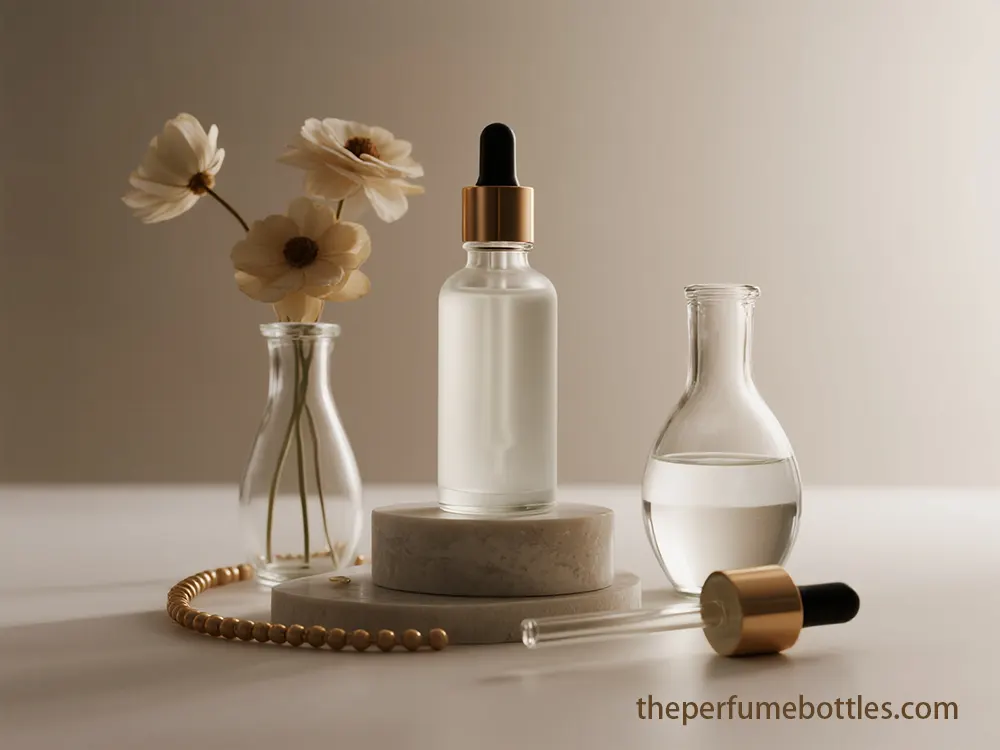
Obțineți mostre gratuite
3. Dezvoltare tehnică și prototipare pentru ambalaje din sticlă pentru uleiuri esențiale
Produsele de inginerie și verificare asigură integritatea, securitatea și durata de valabilitate.
3.1. Compatibilitate chimică și protecție UV
Sticla este preferată pentru inerția sa chimică, prevenind interacțiunea cu compușii volatili care degradează plasticul și cauciucul. Sticlele de plastic pot afecta substanțele chimice, pot modifica calitatea uleiului și pot crește riscul. Multe uleiuri esențiale sunt sensibile la lumină; sticla mai închisă la culoare (chihlimbar, albastru cobalt, verde) blochează razele UV dăunătoare, prelungește durata de valabilitate și păstrează proprietățile terapeutice.
3.2. Testarea integrității structurale
Testele dificile asigură flexibilitatea fizică.
- Rezistență la șocuri termice: Evaluează modul în care sticlele gestionează fluctuațiile rapide de temperatură (de exemplu, 60–90 °C până la 0-20 °C) fără a se dezintegra, semnificativ pentru transport și depozitare 64, ASTM C149 testează în special recipientele comerciale din sticlă pentru șocuri termice.
- Rezistență la cădere și presiune: Sticlele asigură efecte fizice și presiune internă.
3.3. Instrumente avansate de proiectare și simulare
- Prototip rapid: Imprimarea 3D (SLA, FFF) accelerează dezvoltarea designului, permițând evaluarea fizică a esteticii și structurii înainte de producție, adaptarea bugetului și lansare.
- Analiza elementului terminal (FEA): Stresul în proiectarea sticlei din cauza sarcinii stabile și tranzitorii (presiune internă, șoc termic), identifică zonele cu probleme și adaptează designul în funcție de lumină sau performanță înainte de fabricație.
3.4. Procese de validare pentru sisteme de închidere noi
Sistemul de închidere este important pentru o etanșare etanșă, pentru a proteja împotriva riscului de aer și a contaminării. Componentele încapsulate sau umplerea necorespunzătoare pot provoca scurgeri și defecțiuni. Uleiurile esențiale cu capac și gât 18DIN sunt standarde industriale pentru flacoanele cu pipetă.
3.5. Standarde industriale și caracterizare chimică
- Standardele ISO și ASTM: Stabilirea metodelor pentru testarea și calibrarea materialelor din sticlă, asigurarea calității și a intervalului de toleranță. ASTM este standard comun în SUA (FDA-Panchayat pentru produse farmaceutice), în timp ce ISO este predominant în Europa și Asia.
- Caracteristica chimică a uleiului esențial: Cromatografia gazoasă-spectrometria de masă (GC-MS) identifică componentele, măsoară concentrațiile, confirmă autenticitatea și detectează adulterarea, asigurând beneficii medicale și conformitatea cu reglementările.
3.6. Validare completă a ambalajelor
Verificarea ambalajelor necesită un plan complet, inclusiv criteriile de acceptare, o dimensiune suficientă a eșantionului și cea mai defavorabilă poziție. Strategiile ar trebui să se alinieze cu standarde precum ISO 11607–1, -2 și ISO, în special pentru proiectarea barierelor sterile. Studiile de închidere și testarea materialelor extractibile/lechelle sunt, de asemenea, importante pentru sistemele de închidere a containerelor.
4. Fabricarea și asigurarea calității sticlelor de ulei esențial din sticlă
Sticlă de înaltă calitate sticle de ulei esențial se bazează pe o fabricație avansată, o decorare precisă și un control strict al calității.
4.1. Tehnici de turnare de precizie
Sticlele sunt produse folosind tehnologii avansate de formare, cum ar fi suflare-suflare, presare-suflare și presare-suflare cu gât îngust (NNPB), permițând o distribuție precisă a sticlei și recipiente mai ușoare și mai rezistente.
4.2. Procesul de recoacere critică
După formare, sticlele trec prin tunelul din bhattas pentru a elimina tensiunile interne prin răcire rapidă, ceea ce crește considerabil rezistența și durabilitatea. În cazul sticlei sodo-calcice, sticlele sunt încălzite la 510–550 °C și sunt răcite treptat, un proces care durează de la 20 de minute la 2 ore. O recoacere adecvată poate crește rezistența la impact cu 300% și poate face față fluctuațiilor de temperatură de 50–70 °C.
4.3. Diverse metode de decorare
Adaptarea sporește frumusețea prin atractivitate și branding:
- Serigrafie, ștanțare la cald, gravare cu laser, aplicare delicată, vopsire prin pulverizare, glazurare, galvanizare, tampografie, metalizare, transfer la cald și makkashi.
4.4. Protocol de control al calității în mai multe etape
Se aplică protocoale stricte de control al calității, în mai multe etape:
- Inspecția materiilor prime: verifică puritatea, compoziția și umiditatea.
- Monitorizare în timpul procesului: Search for irreversible records, extended traceability, and reliable transactions, important for essential oil integrity and compliance.
- Inspecția post-producție: Inspecție 100% manuală și automată pentru precizie dimensională, defecte vizuale (bule, fisuri, zgârieturi) și testare funcțională (efect, presiune, șoc termic, etanșare, rezistență chimică).
4.5. Sisteme avansate de inspecție automată
Sistemele automate sunt indispensabile pentru detectarea rapidă și precisă a defectelor. Acestea utilizează camere de înaltă rezoluție, senzori speciali, iluminare LED și algoritmi de inteligență artificială/învățare automată, care identifică defecte minuscule (micro-încrucișări, bule, deformări, rupturi ale filetului) cu o precizie de până la 0,1 mm.
4.6. Controlul statistic al procesului (SPC) pentru îmbunătățire continuă
SPC monitorizează și controlează procesele de construcție folosind date în timp real pentru a asigura eficiența și calitatea coerentă. Acesta controlează diagrama de control pentru a distinge variația generală din motive atribuibile, pentru a detecta problema inițială, a reduce risipa și a îmbunătăți capacitatea procesului.
4.7. Impactul toleranțelor de fabricație asupra operațiunilor din aval
Precizia dimensională afectează eficiența liniei de depunere și experiența consumatorului. Abaterea selectivă se oprește și afectează compatibilitatea dozatorului, ducând la scurgeri sau etanșare necorespunzătoare.
4.8. Inițiative de eficiență energetică
Producătorii reduc consumul de energie și emisiile:
- Modernizați cuptoarele, aplicați recuperarea căldurii reziduale și optimizați utilizarea apei/electricității.
- Utilizarea de ciob de bere (25–90% din amestecul de lot), care reduce temperatura de topire și necesarul de energie.
- Designul ușor al sticlei reduce, de asemenea, energia în timpul topirii și formării.
4.9. Provocări în ceea ce privește consecvența culorilor pentru sticla decorată
Menținerea culorilor continue în producțiile mari, în special în cazul straturilor pulverizate sau serigrafiei, este o provocare. Factori precum varietatea lotului de cerneală/vopsea, grosimea aplicării și tratamentul afectează culoarea finală, ceea ce necesită o monitorizare riguroasă în timpul procesului.
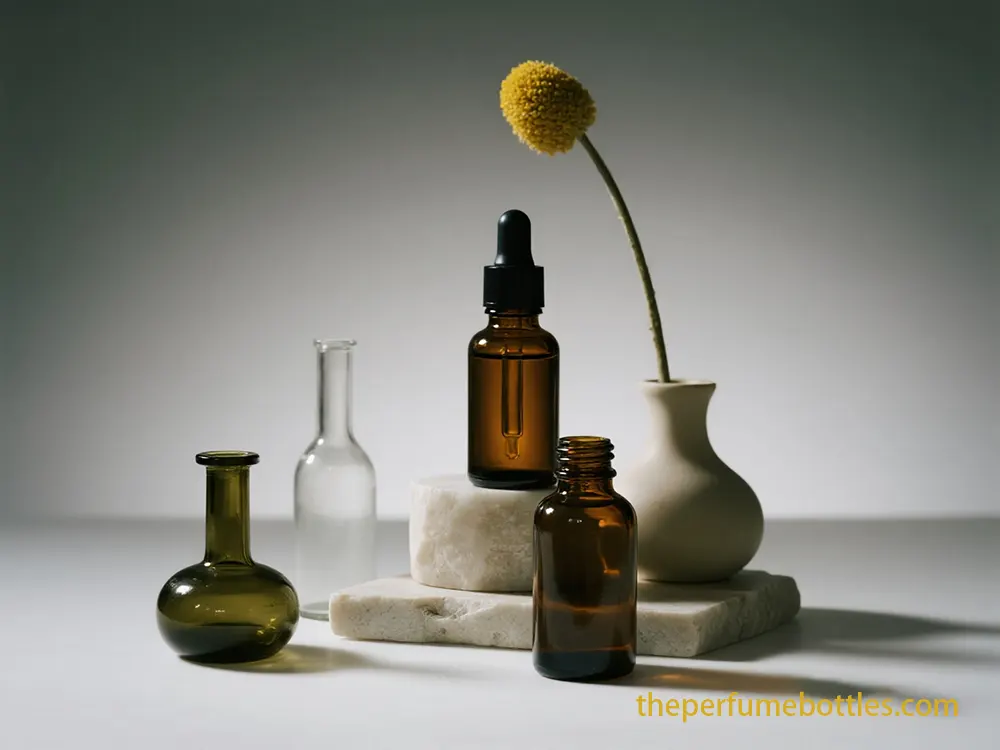
Obțineți mostre gratuite
5. Managementul lanțului de aprovizionare și logistică pentru ambalajele din sticlă pentru uleiuri esențiale
Adaptarea lanțului de aprovizionare pentru sticlele delicate de uleiuri esențiale este importantă pentru eficiență, rentabilitate și responsabilitate față de piață.
5.1. Optimizarea aprovizionării
- Selecția materialelor: Sticlă sodo-calcoară, borosilicată sau colorată (chihlimbar, albastru cobalt, verde) în principal pentru inactivitate chimică și protecție UV. Sticla violetă oferă o protecție mai bună pentru produsele ultra-Permina.
- Structura costurilor și selecția furnizorilor: Costurile totale la debarcare includ materiile prime (nisip silicic, sodă calcinată, calcar, colaci), a căror instabilitate afectează prețurile. Cumpărătorii B2B evaluează producătorii în funcție de controlul calității (ISO, GMP), adaptare, calitatea minimă a producției (5.000–10.000 de unități pentru comandă), timpul de livrare și furnizarea de mostre. Relațiile prelungite, în special în crearea de centre precum China, asigură o calitate frecventă.
- Componente specifice și închise: importante pentru integritate și siguranță, inclusiv pipetoare precise, reductoare Orfis, protecție împotriva manipulării și capacului cu sistem de siguranță pentru copii, inclusiv în caz de scurgeri, contaminare, cădere și ingerare accidentală.
Rising consumer demand:
- Ambalaj protector: Strategia multistrat reduce deteriorarea: înfășurare individuală (folia cu bule, manșoane din spumă), tampoane de amortizare, inserții turnate personalizat (de exemplu, EPS, reducând pierderile la 37%), fibră turnată din celuloză sau separatoare ondulate. Este important să se umple golurile cu arahide, perne de aer sau ambalare din hârtie crumport. De asemenea, este important să se consolideze ambalarea dublă și punctele slabe.
- Depozitare: Sticlele depozitate într-un mediu uscat, stabil, cu temperatură/umiditate controlată previn dilatarea/contracția sticlei și protejează ambalajul. Stivuirea strategică (paletizare, interblocare) crește stabilitatea. Protecția împotriva luminii directe a soarelui este necesară pentru uleiurile sensibile la lumină.
- Transport: Pentru a reduce vibrațiile, sunt necesare schimbări rapide și vehicule cu temperatură controlată pentru a preveni suspensia pneumatică. Articolul trebuie fixat cu curele, bare de încărcare sau airbag-uri. Livrarea uniformă a greutății și etichetarea clară „delicat” sunt importante.
5.3. Strategii de atenuare a riscurilor pentru lanțurile de aprovizionare globale
- Diversificare și excese: Reduce dependența de furnizorii unici, cu aprovizionare duală sau multiplă, pentru componente importante, reduce riscurile generate de conflicte geopolitice, dezastre naturale sau probleme de forță de muncă. Transferul/resursarea logisticii poate reduce riscul și timpul de livrare. Contractele pe termen lung și stocurile tampon sunt, de asemenea, importante.
- Monitorizare activă și planificare ocazională: Sunt necesare evaluarea continuă a riscurilor, monitorizarea performanței furnizorilor (stabilitate financiară, calitate, continuitate a afacerii) și dezvoltarea de planuri neprevăzute. Echipamentele bazate pe inteligență artificială pentru planificarea peisagistică și analizele viitoare ajută la prezicerea riscurilor și la permiterea unor reacții rapide.
5.4. Rolul platformelor de vizibilitate a lanțului de aprovizionare
- IoT și digitalizare: Platformele utilizează senzori IoT, etichete RFID și sisteme de coduri de bare pentru transparență completă, în timp real. Dispozitivul IoT monitorizează poziția (temperatură, umiditate, șocuri, vibrații) a încărcăturii și oferă urmărire GPS. Aceste date permit luarea unor decizii active, identificarea obstacolelor și permite inspecția imediată și procesarea reclamațiilor.
- Blockchain: Căutarea înregistrărilor ireversibile, trasabilitate extinsă și tranzacții fiabile, importante pentru integritatea și conformitatea uleiurilor esențiale.
5.5. Analiza cost-beneficiu a metodelor de transport (speculativă/predictivă)
Transportul maritim este o activitate voluminoasă, dar consumatoare de timp. Transportul aerian oferă o distribuție rapidă, dar la costuri ridicate, în special cu controlul temperaturii și ambalaje de protecție rezistente pentru sticla delicată. Această opțiune echilibrează riscurile legate de eficiența costurilor, viteza de lansare pe piață și fluctuațiile de defecțiuni/mediu; petrolul de mare valoare sau urgent poate justifica transportul aerian de mărfuri.
5.6. Impactul evenimentelor geopolitice asupra lanțurilor de aprovizionare cu sticlă
Evenimentele geofizice (războaie comerciale, tarife vamale, conflicte, restricții) afectează semnificativ lanțurile de aprovizionare cu sticlă, cresc costul materiilor prime, provocând perturbări ale producției, iar furnizorii necesită diversificare. Întreruperile de curent cauzate de temperaturile ridicate, de exemplu, evidențiază necesitatea unei vizibilități profunde a lanțului de aprovizionare și a nevoii de furnizori alternativi.
6. Conformitate cu reglementările și sustenabilitate în ambalajele uleiurilor esențiale din sticlă
Companiile de ambalaje oferă asistență semnificativă în gestionarea regulilor complexe și integrarea practicilor durabile.
6.1. Conformitate cu reglementările
- Elaborarea regulamentelor FDA (2024): Claritate actualizată a etichetării (fonturi standardizate, fără afirmații medicale fără simboluri de avertizare, nomenclatură INCI, aprobare FDA), extinsă la uleiuri concentrate, extinsă la uleiuri concentrate pentru ambalaje cu sistem de siguranță pentru copii (de exemplu, esbilion, mentă, ulei de arbore de ceai) și siguranța materialelor pentru siguranță.
- CPSC și ambalaje rezistente la copii (PPPA): CPSC din SUA se aplică PPPA, care impune ambalajele cu sistem de siguranță pentru copii pentru produsele de uz casnic periculoase, inclusiv unele uleiuri esențiale. Există rechemări pentru produse care nu sunt destinate transportului.
- Etichetare conform Legii federale privind materialele periculoase (FHSA): FHSA impune etichetare specifică pentru uleiurile esențiale periculoase, ceea ce necesită detalii despre importator/producător, denumiri generale/chimice, termeni de avertizare („pericol”, „atenție”), declarații periculoase/de precauție, instrucțiuni de prim ajutor și „a nu se lăsa la îndemâna copiilor”.
- Siguranța materialelor și securitatea UV: Sticla este preferată pentru inerția sa, previne reacțiile chimice și scurgerile. Sticla chihlimbară și cobalt oferă protecție UV, în timp ce chihlimbarul oferă o protecție mai bună împotriva deteriorării.
6.2. Sustenabilitatea ambalajelor din sticlă pentru uleiuri esențiale
- The future of essential oil bottle design and functionality is shaped by the future forward -looking trends and technological progresses. Sticla este reciclată permanent. Utilizarea sticlei PCR (în mare parte) economisește materii prime și reduce consumul de energie (2,5% pentru fiecare creștere de 10% a Kullet). Printre provocări se numără PCR-ul limitat, de înaltă calitate, de calitate alimentară, calitatea inconsistentă a materialelor și costurile ridicate.
- Inovație ușoară: Industria a făcut progrese semnificative, menținând masa sticlei și în același timp integrarea
6.3. Certificare și cererea consumatorilor pentru sustenabilitate
- Certificare Certificare: Un standard rigid, bazat pe dovezi științifice, care evaluează sănătatea materialelor, circulara de produs, protecția aerului curat/climei, plumbul apei/solului și echitatea socială. Se aliniază cu obiectivele Uniunii Europene pentru toate ambalajele până în 2030.
- Certificare B Corp: Performanța socială și de mediu reflectă standarde înalte de responsabilitate și transparență. Companii precum Sustainable Packaging Industries (SPI) și JBM Packaging au obținut statutul de B Corp.
- Creșterea cererii consumatorilor: 90% dintre consumatori sunt mai predispuși să cumpere de la mărci cu ambalaje permanente; 54% cumpără în mod conștient astfel de produse. Aproximativ 10 din 7 se așteaptă să își ambaleze produsele până în 2025, iar 43% vor plăti suplimentar. Stabilitatea clară indică o preferință puternică (70%) pentru etichetă.
- Legea privind răspunderea extinsă a producătorului (EPR): Legislația emergentă privind EPR sporește cererea de transparență a materialelor și a conformității din partea producătorilor de ambalaje, necesitând date granulare privind tipurile de ambalaje, greutatea și materialele reciclate. Producătorii care furnizează documentație detaliată beneficiază de avantaje competitive.
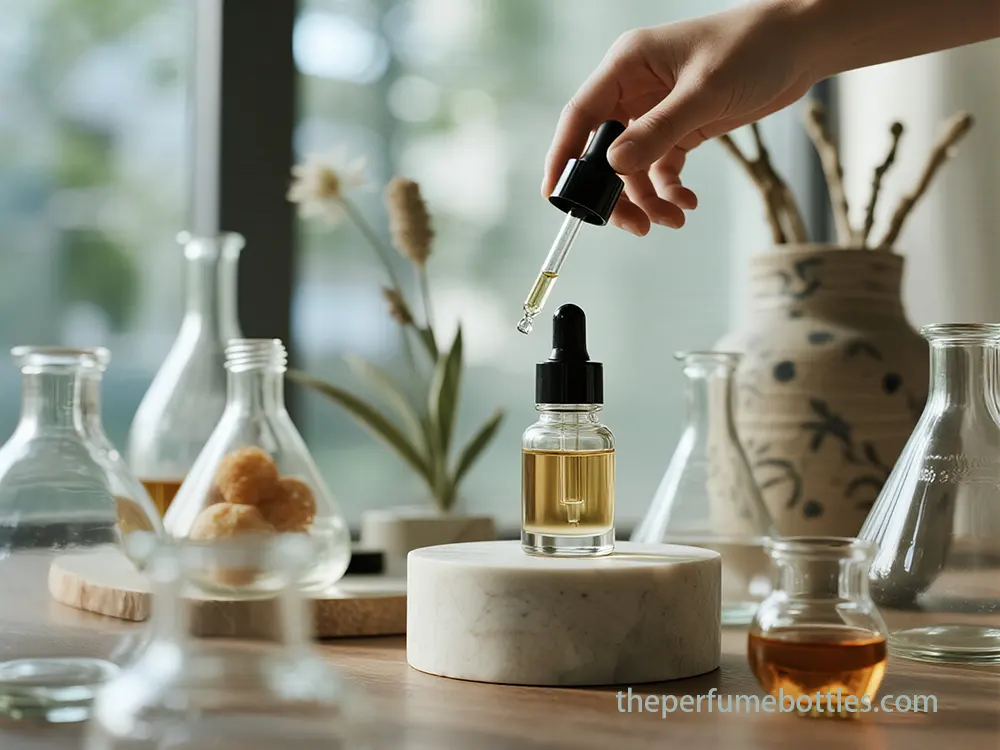
Obțineți mostre gratuite
7. Parteneriat strategic: Accelerarea vitezei de lansare pe piață și îmbunătățirea eficienței costurilor
Companiile de ambalaje acționează ca și consultanți strategici, recomandă tendințele pieței, se adaptează la costuri și aplică rapid și eficient o producție strictă pentru lansarea eficientă a produselor din uleiuri esențiale.
7.1. Tendințe și informații de piață
Industria uleiurilor esențiale este o forță a bunăstării generale, 68,7% dintre adulți utilizând în mod regulat uleiuri esențiale. Se estimează că piața va avea o creștere semnificativă, alimentată de preferințele consumatorilor pentru sănătate naturală, viață permanentă și bunăstare generală. Tendințele în materie de ambalaje pun accent pe personalizare și stabilitate prin materiale ecologice și design minimalist.
7.2. Companiile de ambalaje ca și consultanți strategici
Companiile de ambalaje oferă servicii cu valoare adăugată dincolo de producție. Acestea recomandări privind tendințele pieței, optimizează structurile de costuri și aplică o producție agilă. Ambalajele sunt importante pentru a stabili identitatea mărcii, a comunica valorile și a crea o poveste. Ambalajele deosebit de atractive servesc drept un instrument puternic de marketing pe rețelele sociale, integrând elemente interactive pentru coduri QR sau funcții AR. Implicarea oferă date/vizualizări pentru a impune materiale de marketing.
7.3. Metodologii de optimizare a costurilor
- Ingineria Valorii (VE) și Analiza Valorii și Ingineria Valorii (VAVE): Abordările sistematice prin utilizarea de materiale eficiente, adaptarea designului structural, reconstrucția materialelor și ambalarea secundară reduc costurile produselor (de obicei cu 5-40%) fără a compromite calitatea sau funcționalitatea.
- Economii de costuri indirecte: Spațiu redus de depozitare, costuri de transport mai mici datorită materialelor mai ușoare și timp de ambalare minim.
- Rezistență sporită a ambalajului: Tehnologia VE poate îmbunătăți rezistența ambalajelor pentru a reduce daunele în timpul transportului, ceea ce reduce costurile semnificative datorită deteriorării reduse.
- Specializare și date: Inginerii de ambalaje folosesc date și modele brevetate pentru a identifica materialele ideale, a standardiza SKU-urile și a eficientiza operațiunile, raportând economii de 8-16%.
- Reproiectare și optimizare: Redigerârea ambalajelor și optimizarea formei pot duce la un conținut adecvat și la un deficit de deșeuri; reducerea cu 8% a greutății sticlei poate elimina aproximativ 1,6 milioane de tone de conținut anual, economisind posibil peste 3 miliarde USD.
7.4. Metodologii de producție agile și viteza de lansare pe piață
- Producție lean: eficientizează lanțul de aprovizionare pentru a elimina risipa, creează un flux constant și responsabil și produce conform cererii la cel mai mic cost pentru cel mai mic cost. Acest lucru a dus la o lansare lină, creșteri ale calității și aproape eliminarea acestora.
- Schimb de un minut (smed): O funcționare leană a unei funcționări lean, activități externe și optimizate, separând, separând o funcționare leană pentru a reduce activitățile individuale.
- Beneficii ale implementării: Aplicarea smed și integrarea MES/CMM pot reduce timpul mediu de modificare cu 20-30% în trei luni și cu 40-50% în 6-12 luni. Studiile de caz arată o scădere semnificativă în studiu, crescând eficiența generală a echipamentului (OE) și reducând costurile cu forța de muncă.
7.5. Randamentul investiției în parteneriatele strategice de ambalare
Serviciul de parteneriat strategic Prasad permite diversificarea, accesul la noi piețe, adaptarea resurselor și creșterea creativității/inovației. Măsurarea rentabilității investiției (ROI) este importantă pentru profitabilitate și luarea unor decizii informate, luând în considerare atât costurile directe, cât și cele indirecte. Evaluările regulate și obiectivele medii ale scopului urmăresc ROI-ul și asigură alinierea cu obiectivele strategice. Parteneriatele puternice în producție cresc calitatea produselor datorită transparenței lanțului de aprovizionare, întreruperilor reduse, timpului de livrare mai scurt, valorilor comune și asigurării stricte a calității.
7.6. Rolul analizei datelor în prognozarea cererii pieței
Analiza datelor în prognoza cererii se bazează pe decizii precise privind producția, stocurile și vânzările, pe date istorice, algoritmi de inteligență artificială, modele statistice și informații în timp real (POS, tranzacții online). Reduce excesul. Pentru companiile de ambalaje, o combinație de metode cantitative (de exemplu, serii temporale) cu metode calitative (opinii de specialitate) este esențială pentru o prognoză precisă.
8. Inovații emergente în ambalarea uleiurilor esențiale din sticlă
Viitorul designului și funcționalității sticlelor de uleiuri esențiale este modelat de tendințele viitoare și de progresele tehnologice.
8.1. Tratamente avansate de suprafață pentru protecție și funcționalitate sporite
- Protecție UV personalizată: Bloc de sticlă chihlimbar, rezistență de 98% la razele UVB. Se detectează tehnici avansate, cum ar fi depunerea stratului atomic (ALD), pentru a regla corect lungimea de undă blocată de UV fără a compromite transparența, ceea ce oferă o prevenire sofisticată a fotocardarii.
- Acoperiri antimicrobiene pe bază de uleiuri esențiale: Uleiurile esențiale au proprietăți antimicrobiene subiacente. Clear Research (august 2024) a realizat o nouă suprafață antibacteriană, care includea ulei esențial de eucalipt în micro-nanosferă, ceea ce a permis o scădere a contaminării cu 99,98%, indicând o promisiune de prevenire a formării biofilmului.
- Acoperiri oleofobe și hidrofobe: Aceste acoperiri formează suprafețe rezistente la ulei, anti-amprente și bogate în apă, utilizate pe scară largă în electronicele de larg consum.
- Tratament cu schimb ionic în plasmă (P-IET): Un proces sinergic P-IET din sticlă borosilicată de tip I creează suprafețe hidrofile sustenabile, ceea ce este important pentru eliberarea eficientă și fără deșeuri a medicamentelor pe bază de apă, care pot fi adaptate la doze precise și precise.
8.2. Integrări inteligente ale ambalajelor pentru o implicare sporită a consumatorilor și securitatea lanțului de aprovizionare
Pentru autenticitate și trasabilitate, NFC/RFID: Comunicarea pe teren (NFC) și Identificarea prin radiofrecvență (RFID) sunt utilizate în zone cu valoare ridicată pentru autentificarea produselor și trasabilitatea lanțului de aprovizionare. Contor și algoritmi criptografici dinamici.
- Capacitatea experienței consumatorului: Ambalajele inteligente (cod QR, etichetă NFC, realitate augmentată) oferă informații detaliate despre produs, instrucțiuni de utilizare și mementouri despre dozaj, interacțiune profundă cu clienții și îmbunătățesc experiența de despachetare.
- Implicații etice: Datele despre ambalajele inteligente bazate pe inteligență artificială ridică opinii morale importante despre confidențialitate, securitate, echitate și responsabilitate. Colectarea, utilizarea și stocarea informațiilor sensibile sunt primordiale.
8.3. Formule noi de sticlă sustenabilă și considerații de mediu
- Sticlă biodegradabilă: În martie 2023, a fost lansată o nouă familie de sticlă ecologică, pe bază de aminoacizi și peptide. Aceasta este sticlă biodegradabilă, reciclată și pe bază de biologie, care abordează nebiodegradabilitatea sticlei tradiționale. Cu toate acestea, acest lucru este în prezent „departe de comercializarea în masă”.
- Sticlă ultra-ușoară: În peste 50 de ani, ambalaje din sticlă vor fi produse cu 30% mai ușoare și cu 70% mai puțin consumatoare de energie.
- Sticla ca opțiune permanentă: Sticla este 100% reciclată și poate fi reciclată la nesfârșit fără pierderi de calitate. Reciclarea sticlei reduce consumul de energie și emisiile de CO2. Consumatorii aleg ambalajele din sticlă datorită presupusei lor prietenoase cu mediul.
- Sistem de închidere și reumplere ecologic: Inovația include capace biodegradabile, capace din bambus și pipetoare din PP reciclabile. Soluțiile reutilizabile și reutilizabile pentru reducerea ambalajelor de unică folosință sunt în creștere.
Vesseluxe se află în avangarda acestor inovații, oferind soluții personalizate care combină tehnici de ultimă generație cu practici sustenabile pentru a distribui ambalaje care nu numai că protejează și conservă uleiurile esențiale, dar sporesc și prezența mărcii și rezonează cu un consumator sensibil.
Comentarii
Categorii de produse
Sticle de vânzare fierbinte

Case Study:How a Portuguese Independent Fragrance Brand Chose Mosteb as Its Glass Perfume Bottles Vendor
A fragrance brand partners with us as glass perfume bottles vendor, resolving frosting and cap-fit issues with precise engineering and stable custom production.
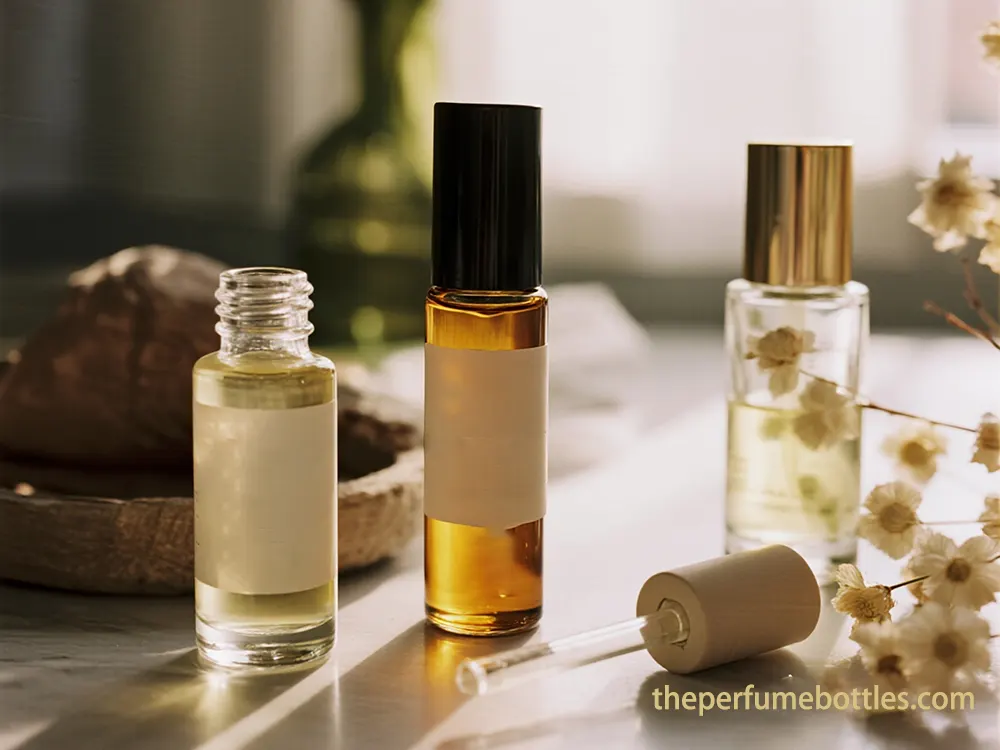
Producători de sticle cu role din sticlă în 2026 – Tendințe cheie viitoare
Explorează tendințele anului 2026 cu un producător important de sticle cu rolă din sticlă - ambalaje ecologice, design inteligent și sustenabilitate
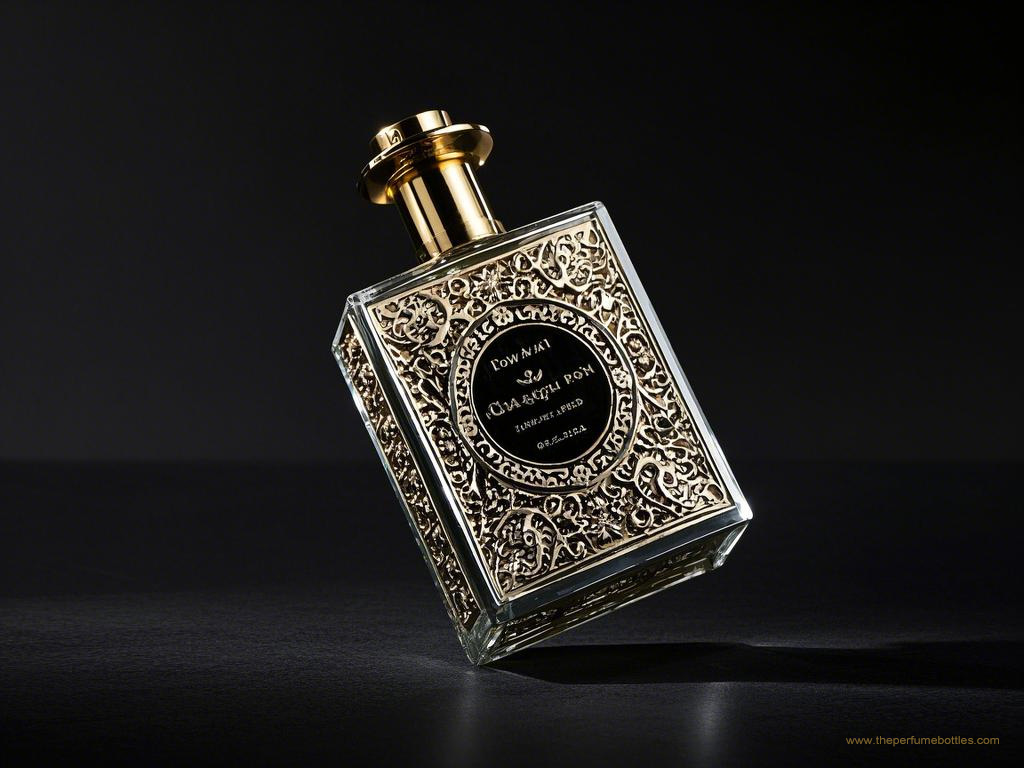
Sticluțe de parfum personalizate: Gravează imaginea mărcii tale în dragostea clienților
Vrei să-ți faci marca de parfumuri de neuitat? Sticluțele de parfum personalizate sunt secretul!
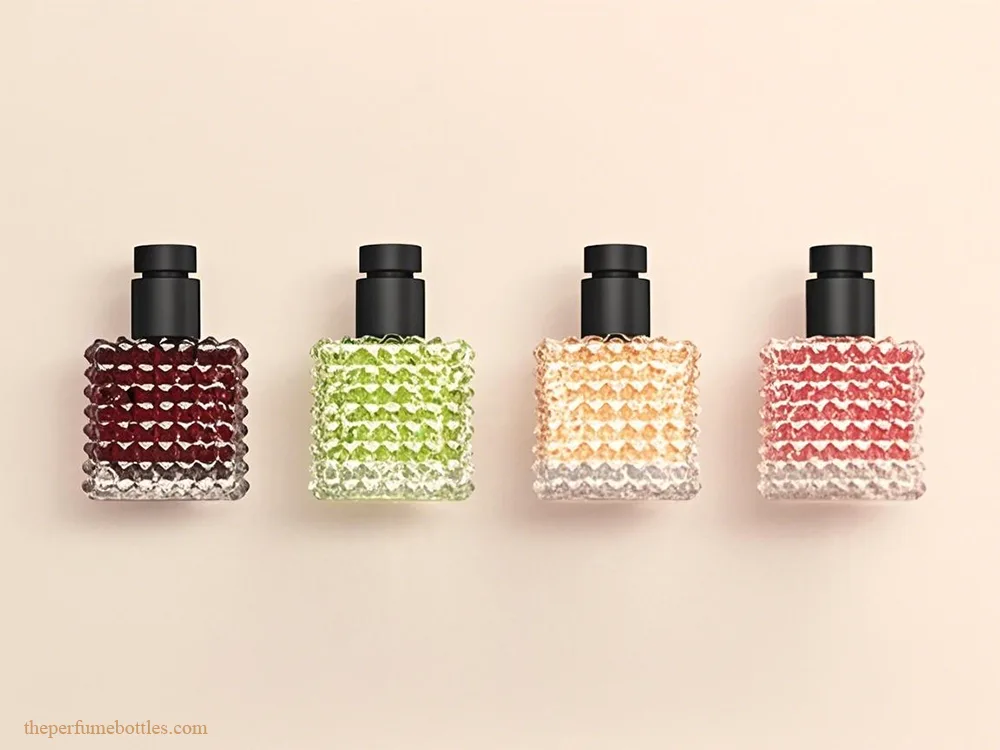
Sephora reumple sticlele de parfum: politică, disponibilitate și perspective de viitor
Sephora reumple sticlele de parfum? Acest raport oferă o evaluare detaliată a planurilor și practicilor Sephora privind reumplerea parfumurilor.
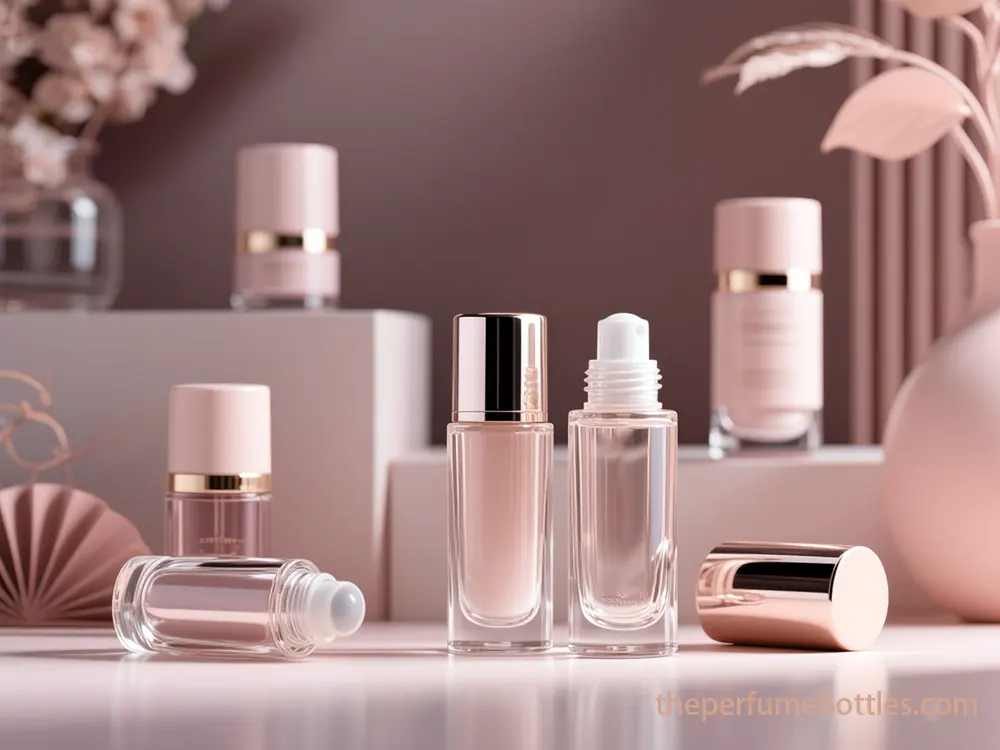
Rolul inovației în îmbunătățirea sticlelor de sticlă goale cu rolă pentru cosmetice
Inovația în domeniul sticlelor goale cu role din sticlă îmbunătățește produsele cosmetice, oferind o experiență de utilizare mai bună, durabilitate și sustenabilitate.
- +86 186 5178 1159
- [email protected]
- Luni-Duminică 07:00-21:00
Etichete
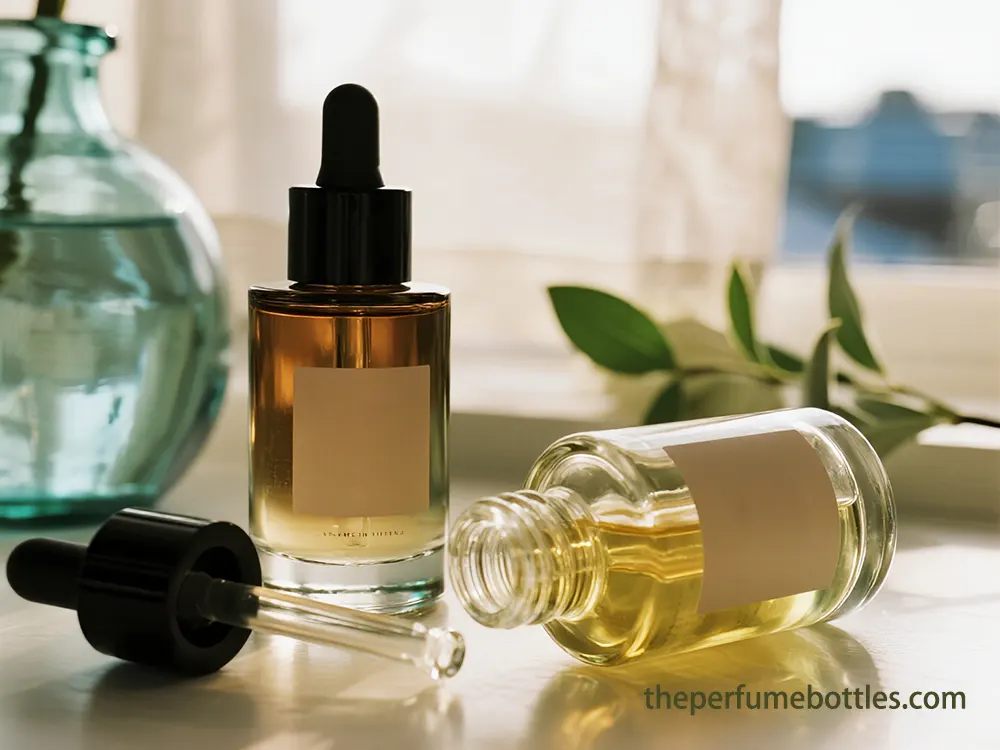
Alegerea furnizorului potrivit de sticle cu pipetă: De ce contează mai mult decât prețul
Învață cum să alegi furnizorul potrivit de sticle cu pipetă din sticlă, concentrându-te pe calitate, conformitate, stabilitatea aprovizionării și sustenabilitate, dincolo de cost.

Case Study:How a Portuguese Independent Fragrance Brand Chose Mosteb as Its Glass Perfume Bottles Vendor
A fragrance brand partners with us as glass perfume bottles vendor, resolving frosting and cap-fit issues with precise engineering and stable custom production.
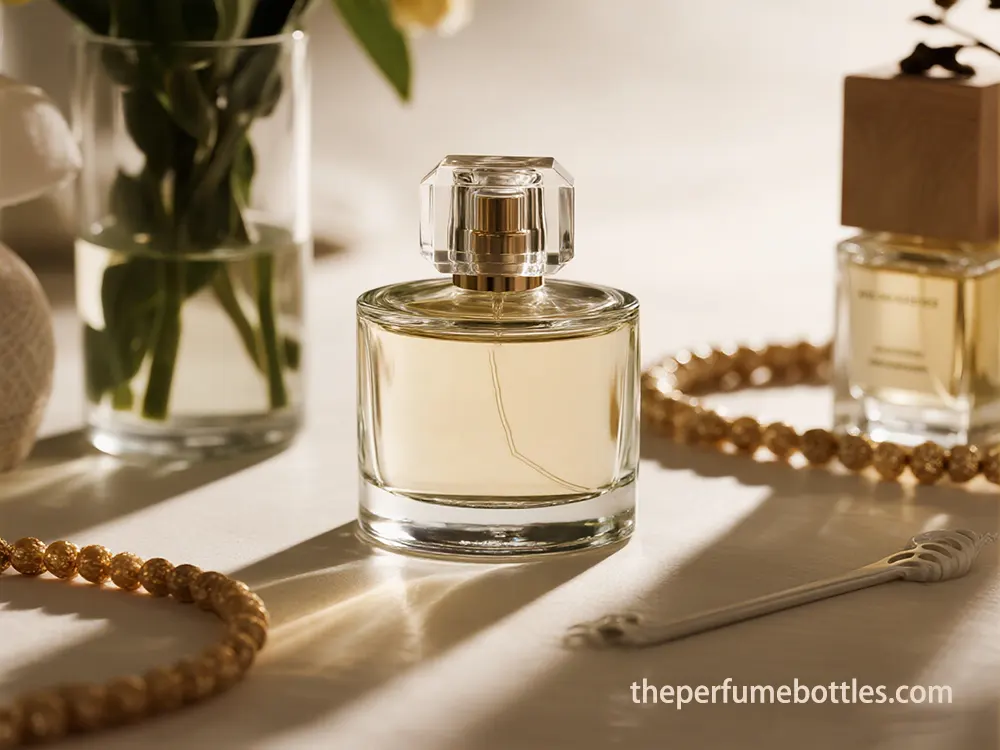
Un cadru strategic pentru selectarea unui furnizor de sticle de parfum din sticlă
Găsește-ți furnizorul strategic de sticle de parfum din sticlă cu ajutorul acestui ghid, care arată cum partenerul potrivit stimulează viteza și creșterea scalabilă a mărcilor de parfumuri.

Studiu de caz: Fabrica noastră de sticle cu role din sticlă a livrat ambalaje pentru un brand de uleiuri esențiale
Un studiu de caz despre cum o fabrică de sticle cu role din sticlă a rezolvat problemele de stabilitate la rulare și durabilitate a gâtului subțire pentru a oferi sticle premium fiabile și fără scurgeri.

